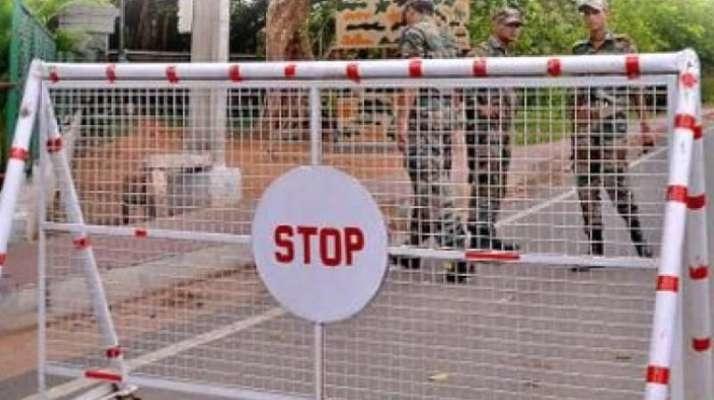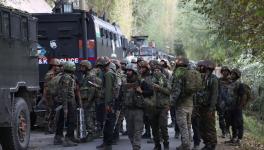Cantonment Roads: Two Wrongs Do Not Make a Right

Image Coutesy: Dailyhunt
On May 22, roads within cantonment areas were opened to the general public through an order issued by the Ministry of Defence. The Army was thus instructed to dismantle all road blocks and barricades. The issue with this decision is that it flies in the face of the Official Secrets Act, 1923, the Cantonments Act, 2006, the Cantonment Land Administration Rules, 1937 (CLAR), as well as a decision of the Hyderabad High Court. The decision to open the roads to the general public was taken ostensibly by keeping in mind the inconvenience caused to the public due to being denied thoroughfare through the cantonment roads. Another reason cited by the Ministry of Defence on May 28, 2018 was that the good public schools exist within the cantonment areas, and it would not be fair to deny public the access to these schools. On June 5, the Defence Minister Nirmala Sitharaman stated that the decision was taken since the local military authorities (LMA) had not followed the procedure laid down in section 258 of the Cantonments Act.
Section 258 of the Cantonments Act lays down the procedures for opening or closing roads. Under this section, a Cantonment Board can open any road for public use. However, to close a road, the Board has to take prior permission of the General Officer Commanding in Chief, or the Principal Director. Further, the decision to close a road to the public can only be for security reasons and must be preceded by a public notification inviting objections and suggestions from the public.
On the face of it, it appears that the Cantonment Boards are in almost absolute control of the roads within cantonment areas. However, when one looks at the law laid down under the CLAR, this is not the case. Rule 4 of the CLAR provides for classifying land in the cantonment areas. The land is classified as Class A land, Class B land and Class C land. Class A land is further divided into Class A (1) land on which barracks, ammunition dumps, rifle ranges and other allied military installations exist. Class A (2) land is the land, which is land not actually occupied by the military, but the military wishes to keep it vacant for specific reasons. Class B land is also divided under Rule 6 into Class B (1) land, which consists of ecclesiastical structures and cemeteries. Class B (2) land is the land which is occupied or used by any department of the “provincial government”. Class B (3) land is the land held by a private person on grant. Class B (4) land is the land, which is not included in any other class.
Rule 9 lays down which authority controls each class of the land. Classes A (1), A (2), B (3) and B (4) land is managed by the Military Estates Officer or in the present case, the Directorate General of Defence Estates (DGDE), provided that the Union Government has not specifically placed the Class A (1) land under the control of the LMAs. Class B (1) land is managed with the department in possession of the land. Class B (2) land is managed by the “provincial government” in possession of the land. Class C land is solely managed by the Cantonment Board. Rule 14 further states that the DGDE has control over the Class A lands only to the extent of maintenance activities.
Under the Official Secrets Act, section 2(8) defines a 'prohibited place', in essence, as any installation belonging to or occupied by any branch of the defence forces. Unauthorised entry into them as well as possessing maps and plans of these protected areas is punishable under sections 3 and 5 of the Official Secrets Act. Sections 7 and 8 indirectly empower the armed forces to administer prohibited places. Section 7 prohibits people from interfering with police officers or members of the armed forces in discharging their duties in and around prohibited places. Section 8 makes it mandatory for people to furnish information regarding the commission, abetment or incitement of espionage when demanded to do so by the police or the armed forces. Thus, under the Official Secrets Act, since no unauthorised person may enter a prohibited area, the administration of the prohibited area lies with the armed forces, or the Union Government as the case may be. Thus, the Class A land may be considered a prohibited area under the Official Secrets Act.
Thus, even if a Cantonment Board wishes to open a particular road, if the road traverses through Class A land or Class B land vested with the LMA, then the Board can have no say in the matter.
In 2014, a decision of the Andhra Pradesh High Court dealt with very similar issues. The case, Mani Enclave Residents Welfare Association v. Union of Indiaconcerned a series of petitions seeking to quash the decision of the LMAs to close several roads passing through the cantonment areas of Hyderabad and Secuderabad. The petitioners had stated that closing the roads to the public would cause great inconvenience to them, and further complicate their daily commutes. The Army, however, argued that closing the roads was done in accordance to intelligence inputs, and in the interest of security of the defence installations within the cantonment. To support this, the Army provided the Judge with the relevant reports, which were not disclosed in the Judgement. The Army further displayed that the roads through the cantonment would in fact be more circuitous and that the civilian roads would provide a shorter route to destinations on either side of the cantonment area. The petitioners claimed that since they had been using the roads prior to the army's decision to close them, the roads could not be said to constitute a part of Class A (1) land. This contention was dismissed as the Judge, Justice P. Naveen Rao, stated that merely because civilians were using a particular road would not change the nature of the land on which it was constructed. He further mentioned in his Judgement that security concerns cannot be jeopardised due to the civilian authorities failing to maintain the alternate roads. Thus, the Judgement went in the favour of the Army.
Considering the decision of the Andhra Pradesh High Court, it appears that the current legal position is that civilians can be restricted at any time from passing through Class A (1) land. This arises from reading section 258 of the Cantonments Act while applying the restrictions imposed by the CLAR. Thus, the spheres of control over defence land is laid clear. The LMAs have absolute authority over Class A land, the DGDE has control over Class B land, and the Cantonment Boards have control over Class C land. By imposing an order to open all roads, the MoD appears to have ridden roughshod over the established existing procedure, while stating that section 258 of the Cantonments Act was not adhered to.
Get the latest reports & analysis with people's perspective on Protests, movements & deep analytical videos, discussions of the current affairs in your Telegram app. Subscribe to NewsClick's Telegram channel & get Real-Time updates on stories, as they get published on our website.
























